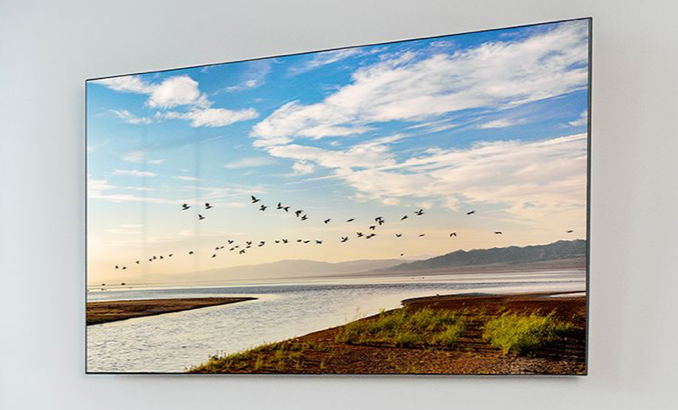Corning Unveils Astra Glass for 8K Monitors
by Anton Shilov on May 15, 2019 4:00 PM EST
Corning has introduced its new glass substrate that was developed specially for mid-to-large-size displays featuring a high pixel density. Corning’s Astra Glass takes into account not only high resolutions, but also process technologies used to make displays featuring high refresh rates, deep colors, and other attributes of next-generation desktop and mobile monitors.
Display cover glasses serve numerous purposes. Apart from protecting the screens themselves, their surfaces also affect their reflectivity, brightness, and accuracy of their color reproduction (as to some degree even work as color filters). Since all materials have a different crystal lattice, their physical properties (transparency, reflectivity, etc.) vary greatly. Considering the fact that screen technologies evolve, so should their cover glasses.
Corning believes that next generations of mid-to-large-size monitors that feature resolutions like 8K (7680×4320) will require a thermally and dimensionally stable glass that can enable desired characteristics and ensure good yields. This is where Corning’s Astra Glass comes into play. It is compatible with a variety of high-performance LCD panels, including amorphous silicon (a-Si) and IGZO oxide.
“After years of close collaboration with customers, we’ve learned what they need in an oxide display glass to bring 8K resolution to larger devices and sets – low total pitch variation, low total thickness variation, and low sag,” said Han Yim, business director, High-Performance Displays, Corning Glass Technologies. “Astra Glass meets the precise, high-temperature requirements of oxide processing.”
Corning expects its Astra Glass to be used for tablets, laptops, desktop displays, TVs, and other applications with an 8K resolution screens. The company will demonstrate prototypes of devices using its Astra Glass at the Society for Information Display’s (SID) Display Week in San Jose, California, this week.
Related Reading:
- Corning Unveils Gorilla Glass DX and Gorilla Glass DX+ for Wearables
- Corning Announces Gorilla Glass 6 for Smartphones, Doubles Durability
- Sharp Demonstrates 31.5-Inch 8K 120Hz HDR Monitor
- New 8K OLED Displays for Tablets and Laptops: 8.3 and 13.3 Inches
- Philips Demos 328P8K: 8K UHD LCD with Webcam, Docking, Coming in 2018
Source: Corning










27 Comments
View All Comments
imaheadcase - Thursday, May 16, 2019 - link
Maybe a quote that applies to what i said instead of a random one that doesn't?Fact is higher rez requires more scaling, no matter size. A 8k phone screen would just chew through every battery, apps would not scale right, so many problems.
damianrobertjones - Thursday, May 16, 2019 - link
Please include the ENTIRE statement... .dullard - Thursday, May 16, 2019 - link
Except William Gates put that as the LOWER limit, not the upper limit.Lord of the Bored - Saturday, May 18, 2019 - link
"640 by 480 should be enough for anybody."brunis.dk - Thursday, May 16, 2019 - link
"Nobody will ever watch FullHD movies on a tiny screen, what would be the point?" -anonymousimaheadcase - Thursday, May 16, 2019 - link
Most people don't actually. Believe it or not most people don't have unlimited data plans, which is what the point of watching on the road vs why bother using phone when you are at home on wifi. loljordanclock - Thursday, May 16, 2019 - link
High pixel density =/= 8K for all of these devices.The very first paragraph outlines the range of uses for this improved glass.
SteveX107 - Friday, May 17, 2019 - link
Maybe, in the future, we will have a foldable phone which you can use as a TV, tooLord of the Bored - Saturday, May 18, 2019 - link
We can but hope!olafgarten - Wednesday, May 15, 2019 - link
The Oxide is redundant, IGZO stands for Iridium Gallium Zinc Oxide